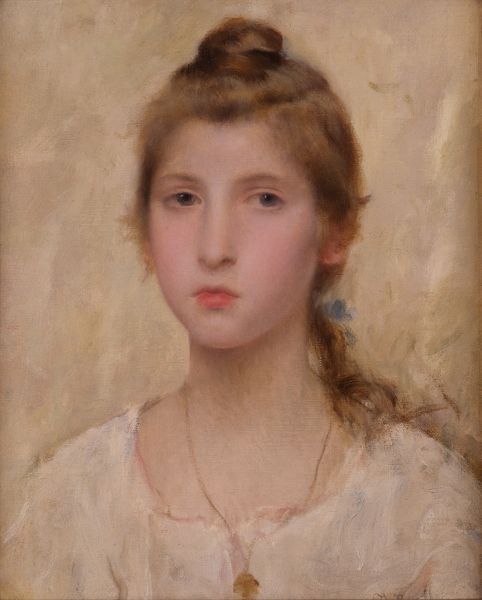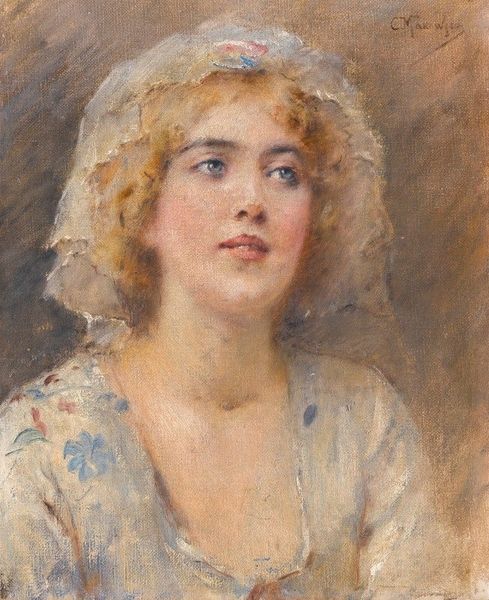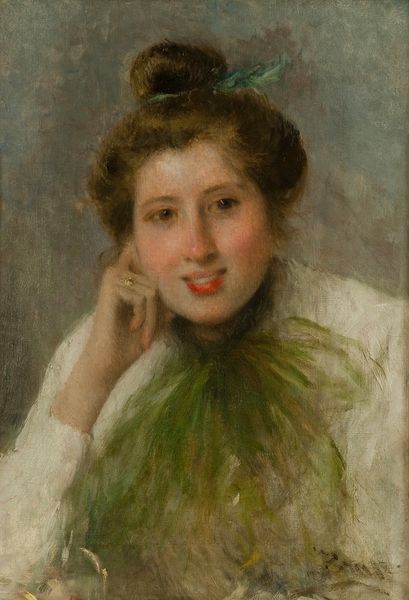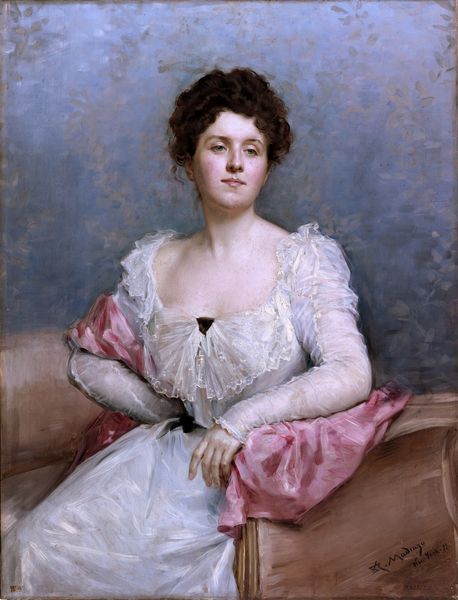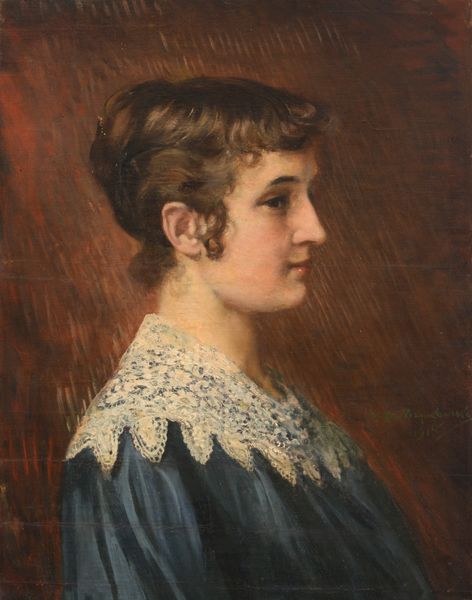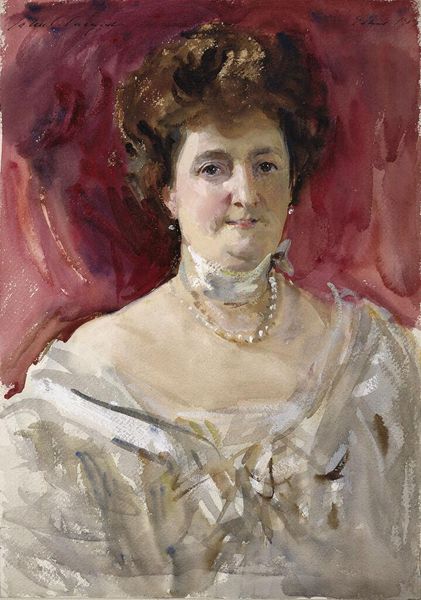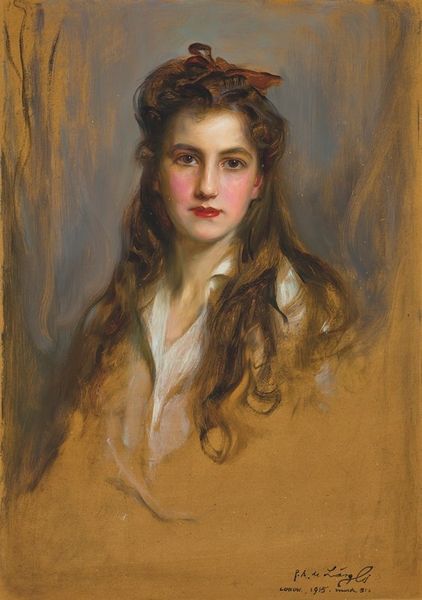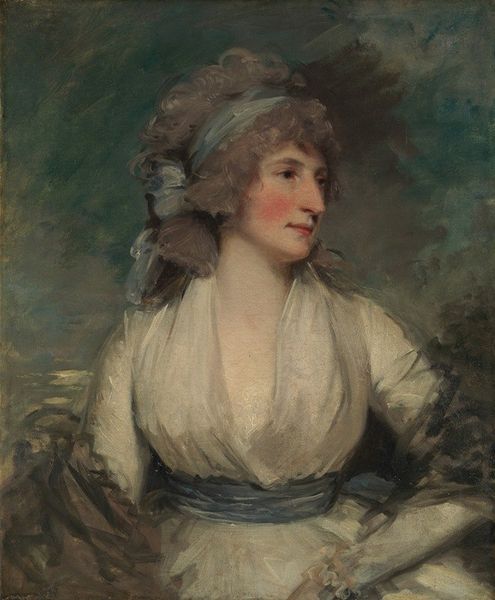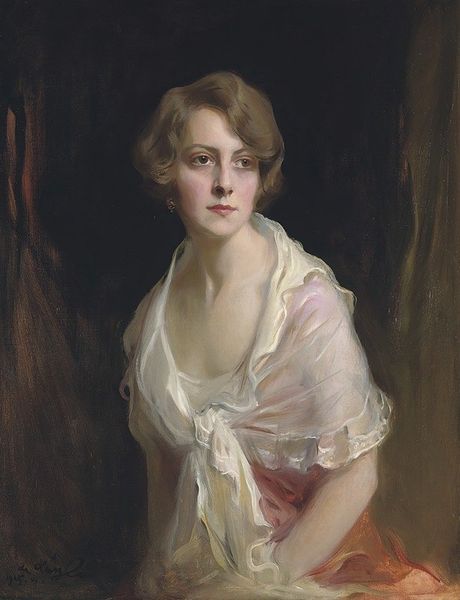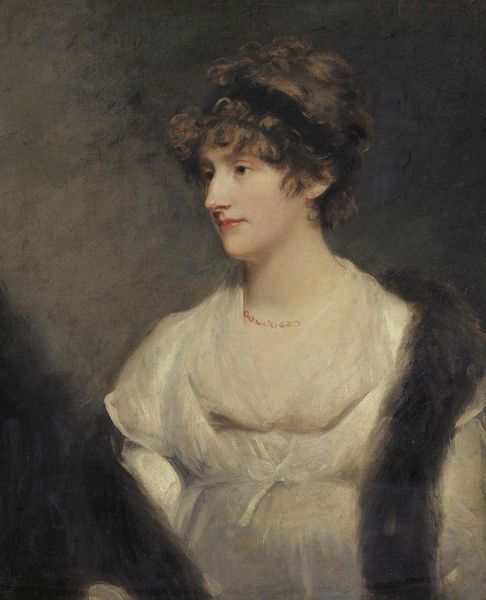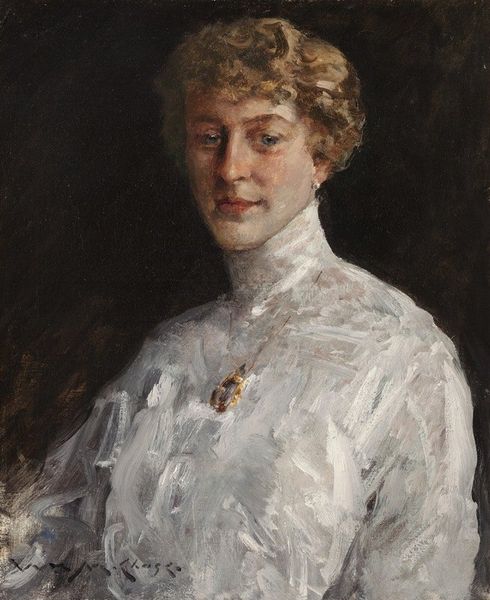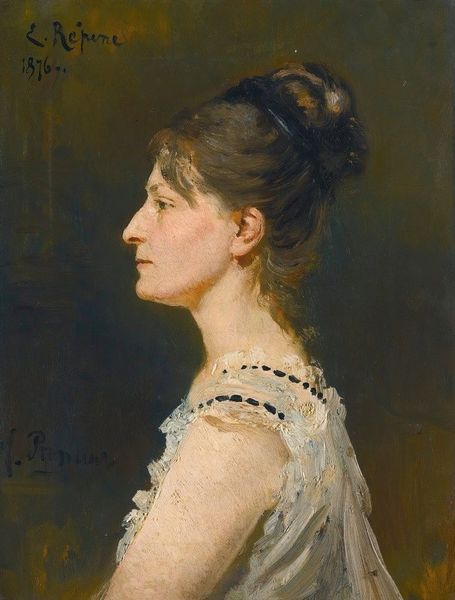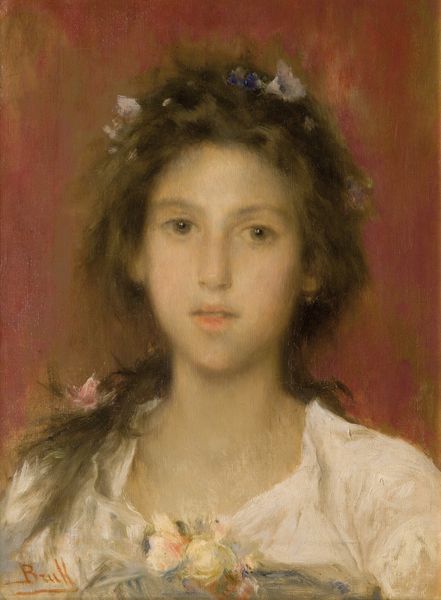
Copyright: Public domain
Curator: Joan Brull's "Springtime," created in 1906, offers a striking image housed here at the Museum of Montserrat. Editor: It's quite delicate, isn't it? The soft focus and muted palette give it a dreamy quality, like a half-remembered reverie. Curator: Absolutely. Brull, deeply rooted in Catalan Symbolism, often depicted idealized female figures. This painting embodies the romanticized vision of womanhood prevalent in the artistic circles of early 20th century Barcelona. The painting showcases a genre-painting as well as an artistic study into academic art through portrait styles and execution. Editor: I am drawn to how the material quality supports the work. Look at how the oil paint is applied in wispy strokes, building up the form without sharp lines. It's interesting how Brull softens and dissolves the traditional portrait format and emphasizes the labor it takes. Curator: The context in which Brull worked is important here. He achieved recognition during the rise of Catalan modernism, a period defined by a quest for national identity. Brull's subjects weren't just pretty faces; they symbolized the soul of Catalonia. He did not have complete control, he answered to the market too. Editor: True. The brushwork also points toward Impressionistic influences, disrupting the established academic norms of portraiture at the time. Curator: Indeed, a gentle revolution on canvas. And, how did these idealized representations affect women themselves? What expectations were set, what realities ignored? It speaks volumes about the societal constraints of the era. It is a celebrity portrait even. Editor: But it also speaks to the enduring human desire to find beauty and grace in the everyday, even amidst complex material conditions. Curator: A point well taken. Brull's painting provides a fascinating window into not just artistic styles but also the prevailing cultural attitudes that dictated not only who made art but the role art played at the time. Editor: Seeing it now, it's less a depiction of simple beauty and more a reminder of the subtle tensions always at play between representation and reality in the historical construction of materials, and the work to establish the piece itself.
Comments
No comments
Be the first to comment and join the conversation on the ultimate creative platform.
